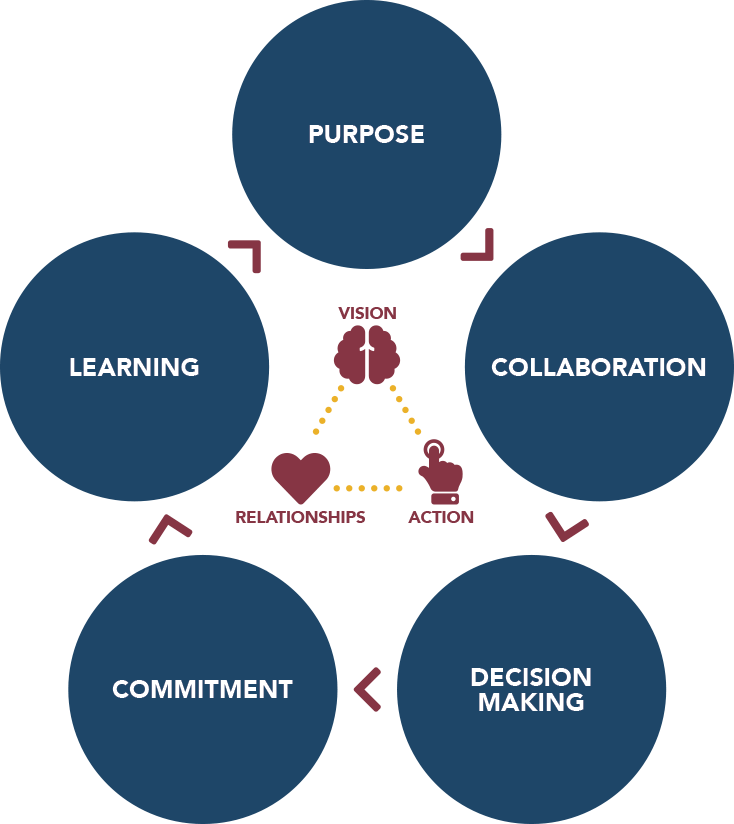30 second summary:
How do you engage individuals to work for the good of a team? We look at the 5 key factors to consider when leading a team to collaborate: clear purpose and shared meaning for the team to work towards, SMART goals, clear roles, clear communication and frequent, fair feedback.
The CEO of a mission-critical organisation said to me at the end of a team strategy day I’d facilitated: “I haven’t got it yet – the formula for how you get people to put the organisation’s interests above their own.
I’m a scientist. I join one molecule of oxygen and two of hydrogen to get water. So what’s the formula for getting people more excited about working together than by themselves?” If such a formula exists, it has to include factors that engage people as individuals. There is no ‘I’ in ‘team.’ But there are two ‘I’s in organisation!

From research and practice, I suggest 5 factors for this equation:
- Establish clear purpose and shared meaning.
- Agree SMART ambitious goals.
- Define clear and diverse roles.
- Communicate clearly and frequently.
- Make feedback and review frequent, transparent and fair.
1. Establish clear purpose and shared meaning. This tells all team members what they exist to achieve as a collective. It brings focus to a collective result that is greater than what any team member can achieve alone. It promises a share in greater rewards than any individual could attain operating singularly. And it paints a big-picture future worth working for.
2. Agree SMART ambitious goals. Involve the whole team to set team goals that optimise buy-in and include all perspectives. Collective goals clarify individual accountability and where collaboration between multiple team members is required. SMART team goals identify specific, measurable, achievable, relevant and time-bound interdependencies.
3. Define clear and diverse roles. Ensure that overlaps in roles are enough to help people connect and trust each other, but not enough to result in much duplication. Define roles to ensure inclusion of the diversity that different team members bring. Affirm the differences. Use the difference between individuals as a source of growth for all, and of creativity for the team.
4. Communicate clearly and frequently. Especially in fast-paced climates, where multiple cultures, ambiguity and interdependency abounds, healthy workplaces give people a good sense of where they are - against own goals, team goals, the organisation’s vision and the competitive environment. Even just saying ‘I don’t know any more than you do’ increases dialogue and builds trust.
5. Make feedback and review frequent, transparent and fair. Double and triple loop learning lies at the heart of innovation and a learning culture. Both require strong reflection. Effective review feeds innovation as it celebrates and leverages success and identifies performance break-through. Effective feedback feeds learning if balanced, objective, observed, specific & time-bound (BOOST). So … how about this as a formula for teamwork:


Book an exploratory call to find out how we can help you unlock your business potential.
Don't miss our latest insights
Subscribe to our Resource centre
Other articles that may interest you:

5 Principles For Motivating a Team
Tie what an individual values to the team’s results and you tie individual motivation to high performance team-working. So what do individuals val...
Read more
How To Develop a Business Strategy
"A commando business consultant if there ever could be such a thing." Facilitation and documentation of a team-generated strategy to secure the fu...
Read more
What Does Good Leadership Look Like?
What good leadership looks like at the level of leading individuals, teams and organisations.
Read more